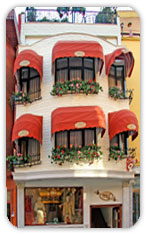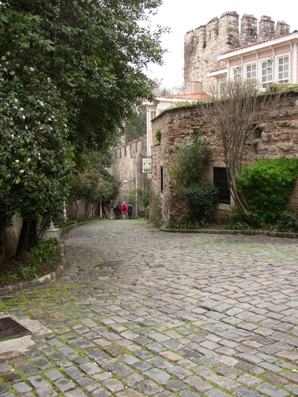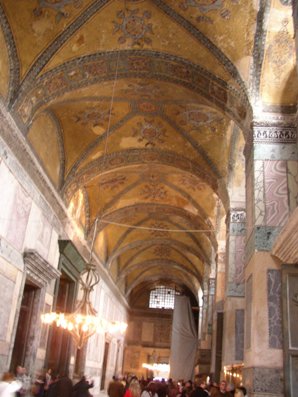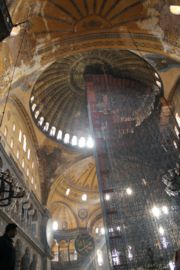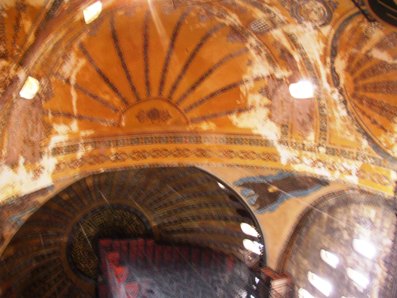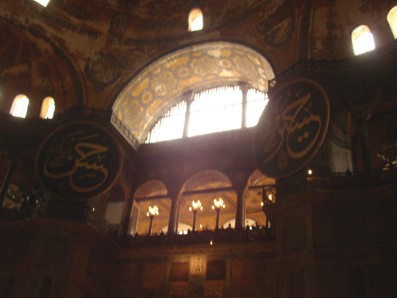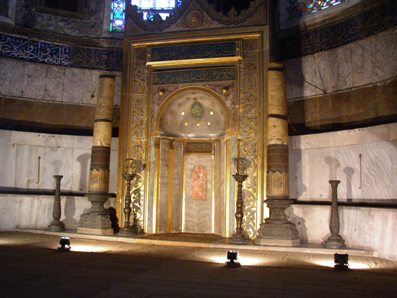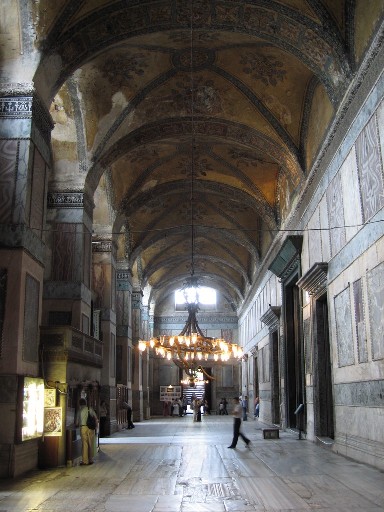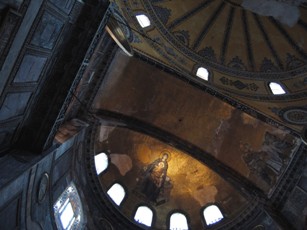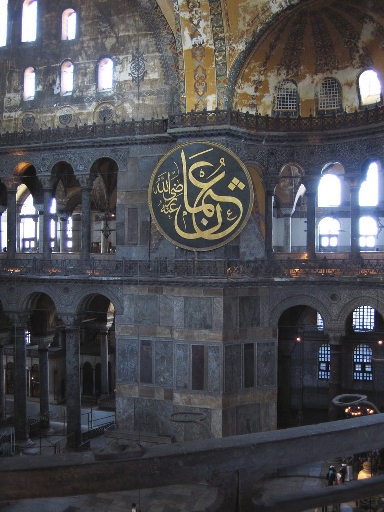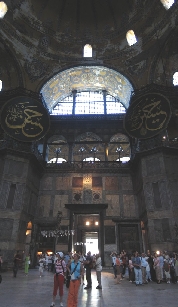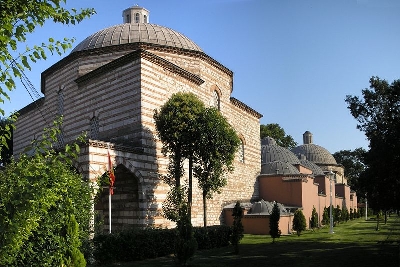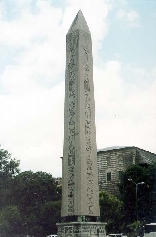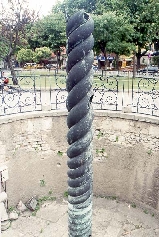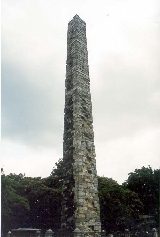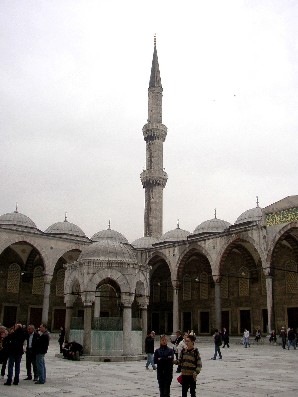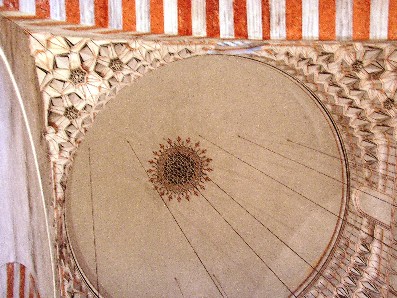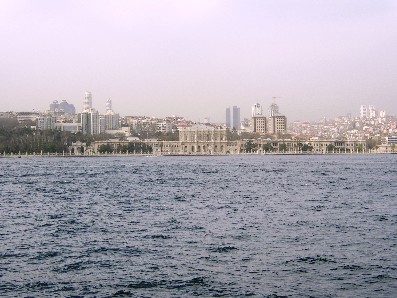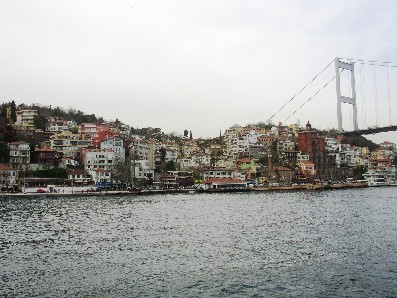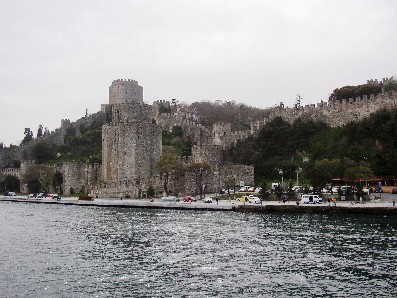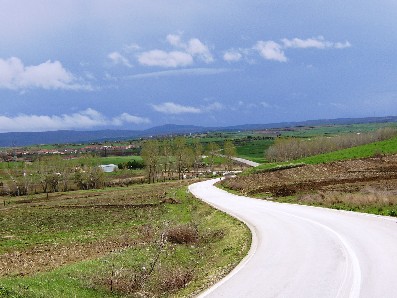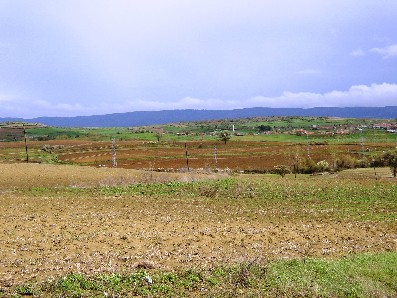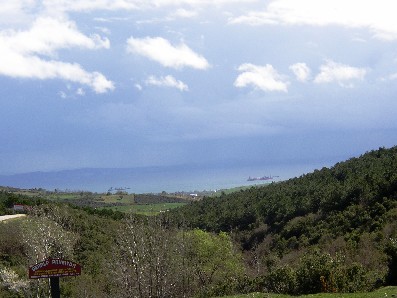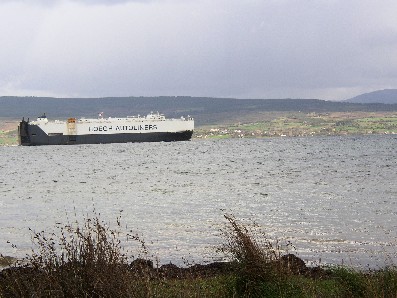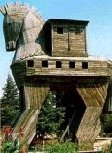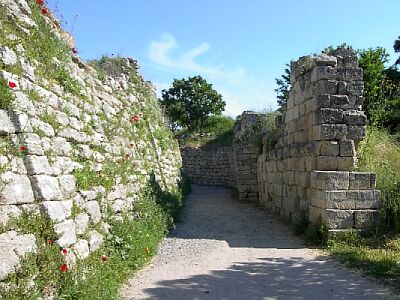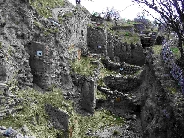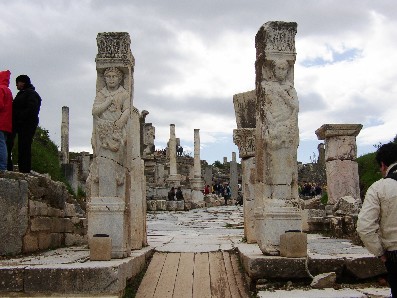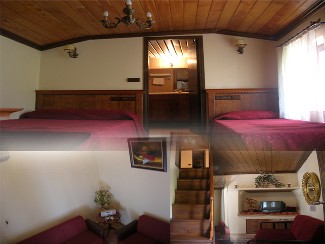
Our hotel was the Muhlis Bey, a very nice Ottoman style building, located no more than a city block from either Haghia Sofia or the Blue Mosque. It had two terraces for breakfast, the topmost of which gave breathtaking views of both landmarks!
We made a friend there named Ali, a friendly young man at the front desk who explained a great deal of daily Moslem life to us.
The Muhlis Bey Oteli served a traditional Turkish breakfast every morning of cucumbers, tomatos, fresh bread and jam, olives, and cheese. My only regret? Obviously, good coffee is not a tradition for breakfast in Turkey; only instant Nescafe was available. To an American, this was a tough one to get through, but it was the same with every hotel we were at.
The showers were interesting: The shower head is set into the wall of a niche, with the water running onto the tiled floor into a drain near the toilet. Everything tended to get a bit damp without a proper shower or shower curtain, but it was not much of a problem. I was only too glad to see good old 'western' style plumbing! Those Turkish toilets were a bit much!
Oh, I nearly forgot...the muezzin. A muezzin calls out the summons to prayer five times a day...starting at sunrise. That's 6am in March.
